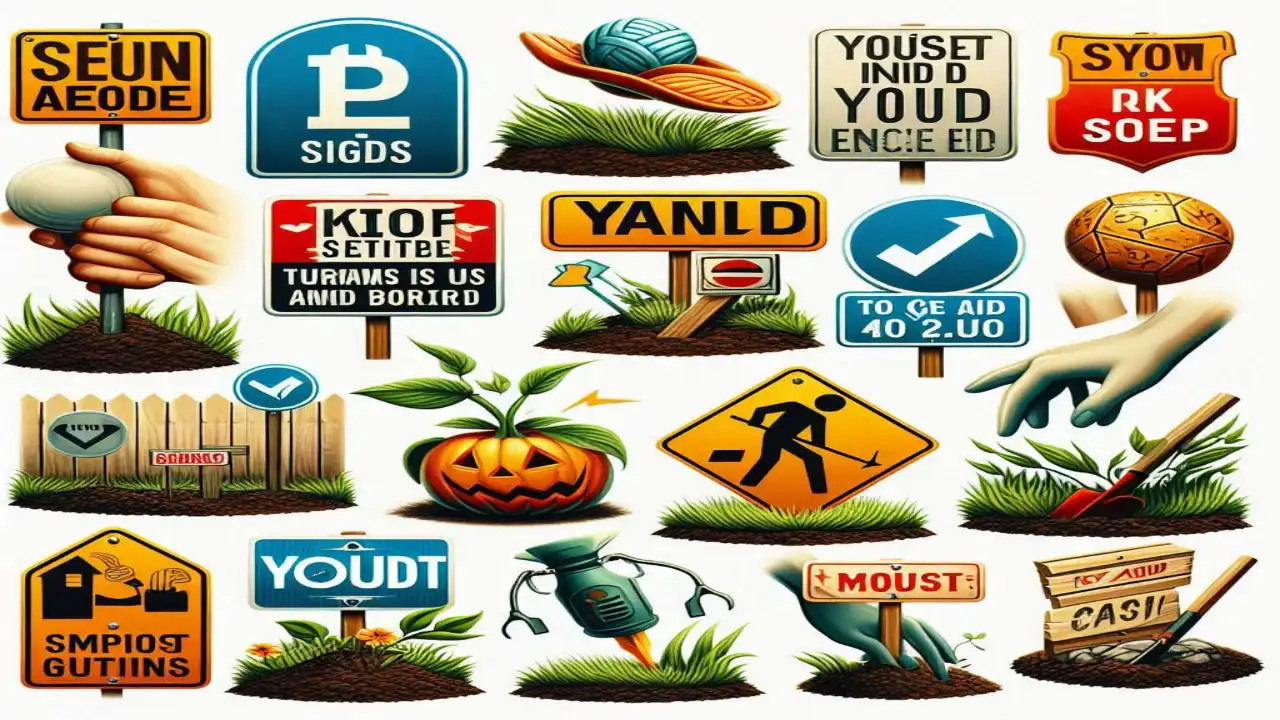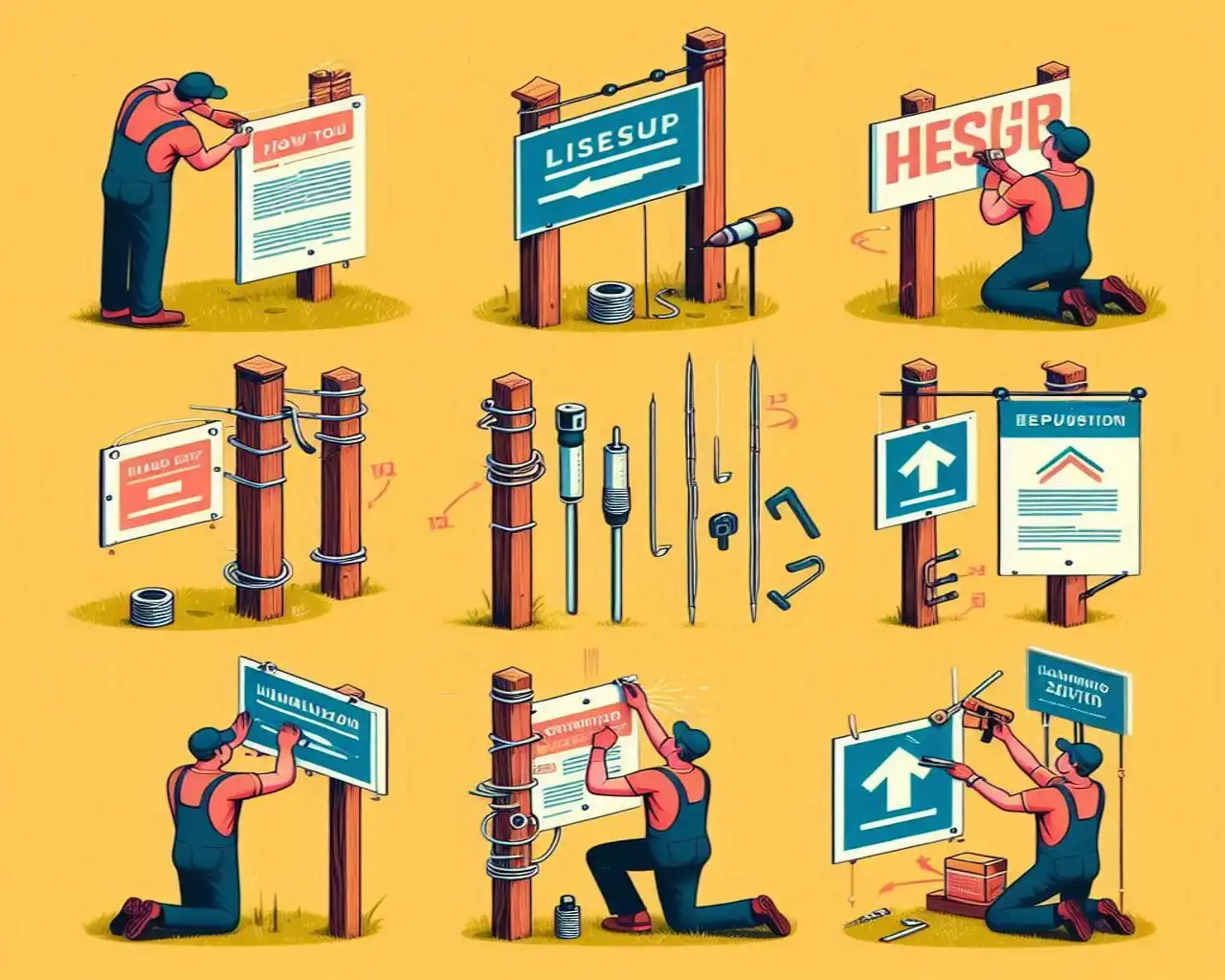Securing yard signs effectively can be a crucial step in delivering messages, promoting businesses, or conveying personal statements in an outdoor space. Whether signs are utilized for advertising, providing directions, or simply adding to the visual appeal of a property, ensuring they remain steadfast under various weather conditions is essential.
A securely installed sign not only stands the test of time but also maintains its aesthetic and functional qualities. This article provides a comprehensive guide to install yard signs securely, with particular attention to effective grounding methods, stability techniques, and maintenance tips.
The Importance of Proper Yard Sign Installation
An inadequately secured yard sign can be a source of frustration, as it may be susceptible to wind, rain, or other natural elements, often leading to frequent repositioning or even damage. Grounding yard signs firmly enables them to withstand challenging environmental conditions, reducing the risk of unexpected dislodging. Furthermore, well-installed signs enhance visibility and ensure the intended message reaches the audience without interruption or deterioration.

Tools and Materials for Installation
Before beginning the installation, it’s essential to gather all necessary tools and materials to fix yard signs firmly. Commonly used items include:
- Hammer or Rubber Mallet: For driving stakes or posts into the ground.
- Level: To ensure the sign is straight and well-positioned.
- Stakes or Anchors: Necessary for stabilizing the sign, especially in areas with soft or shifting soil.
- Protective Coatings: These may include anti-corrosion sprays or waterproof sealants to help keep the sign in good condition.
- Screwdriver and Screws: Required for signs attached to frames or poles.
Choosing high-quality materials ensures that secure outdoor signs stay in place longer and reduces the likelihood of repairs or replacements.
Methods for Securing Yard Signs in Various Soils
The nature of the soil plays a significant role in how effectively a sign can be grounded. Understanding soil characteristics allows one to adapt the installation method for optimal stability.
a) Soft Soil Conditions
In areas with soft, loose soil, stakes or anchors with broader bases are preferable, as they provide more substantial resistance to movement. Push-in stakes with reinforced tips can also assist in creating a firm hold, as can spiral stakes designed to screw into the soil.
In soft soil, driving the stake too deep may reduce the stability of the sign. Instead, positioning it at a shallower depth often helps achieve the necessary sturdiness.
b) Rocky or Hard Soil
Installing yard signs in rocky or hard soil can be challenging, requiring more force and precision. For these situations, metal stakes or rebar, which can penetrate tough terrain, are ideal. A hammer drill may be necessary if rocks obstruct the desired placement spot.
Drilling a pilot hole for the stake can also make insertion easier without compromising the ground’s hold on the sign. In challenging conditions, this preparatory work helps ensure a firmly grounded yard sign that resists dislodging even in adverse weather.

Enhancing Stability Against Wind and Weather
Outdoor signs must endure the forces of nature, from gusty winds to heavy rains. While a simple stake might keep a sign upright under mild conditions, reinforcing the structure can make a significant difference when severe weather strikes.
a) Utilizing Cross-Stakes
One effective approach to increasing stability is the cross-stake technique, where two stakes are inserted at an angle and cross each other just beneath the ground. This crisscrossing formation provides a broader base, helping the sign withstand heavier wind pressure.
Particularly effective in high-wind areas, this technique is ideal for those who want to install yard signs securely without the need for constant maintenance or readjustment.
b) Adding Sandbags or Weights
Adding sandbags or weights to the base of the sign further enhances its stability, especially for larger signs that may have a greater surface area exposed to the wind.
Sandbags can be discreetly placed around the base or even buried slightly to avoid detracting from the visual appeal. This method not only keeps the sign from toppling but also prevents excessive movement that might otherwise lead to wear and tear over time.
c) Applying Weatherproof Coatings
For a secure outdoor sign, adding weatherproofing coatings can protect both the sign and the frame from moisture and corrosion. Waterproof sprays or UV-resistant coatings help preserve the integrity of the sign material, allowing it to endure the elements without damage. A well-maintained sign is easier to secure, as the materials retain their intended form and strength.
Methods for Mounting Yard Signs on Poles or Posts
While some yard signs are mounted directly into the ground, others are affixed to poles or posts for added elevation. Installing these signs requires special considerations to ensure they remain firmly fixed to the supporting structure.
a) Bolt-and-Washer Method
For signs mounted on wooden posts, the bolt-and-washer method provides a reliable way to keep signs stable. This method involves drilling holes through both the post and the sign, then securing them together using bolts, washers, and nuts. Using this method allows signs to be adjusted as needed while still being tightly secured.
b) Locking Mechanisms for Metal Frames
Metal frames often come with pre-drilled holes or brackets specifically designed for securely mounting signs. Locking mechanisms such as clasps or metal fasteners are useful in these cases, as they keep the sign from shifting position due to wind. These mechanisms are particularly effective for larger signs, ensuring they remain in place without sagging or warping over time.

Maintenance Tips for Long-Lasting Yard Signs
Even after achieving a stable installation, periodic maintenance is essential to keep signs secure over time. Regularly checking the condition of stakes, anchors, and the sign itself can help identify issues before they become serious problems.
- Inspect for Corrosion: Metal stakes and frames can corrode over time, especially in humid or rainy climates. Regularly inspect these parts and apply anti-corrosion treatments as needed.
- Check Stability After Heavy Winds or Rain: Signs are particularly susceptible to shifting after storms. Examining and re-adjusting the position of the sign post-storm can help maintain its position.
- Clean and Re-coat as Necessary: Dust, dirt, and weather exposure can degrade the visibility and quality of a yard sign. Regular cleaning and reapplying protective coatings ensure the sign remains legible and attractive.
Eco-Friendly Options for Securing Yard Signs
For those concerned with environmental impact, there are sustainable options for securing signs that minimize waste and resource use. Bamboo stakes or biodegradable materials for holding signs are alternatives that offer the necessary stability while also being environmentally conscious. These eco-friendly options are especially suitable for temporary signs, such as those used in elections or short-term events, where a lower-impact solution may be desired.
Common Mistakes to Avoid When Installing Yard Signs
To maximize effectiveness, it’s essential to avoid common mistakes that can undermine a sign’s security.
- Inadequate Depth: Installing stakes too shallowly often leads to instability. Ensure that stakes go deep enough to provide a secure hold.
- Insufficient Anchoring for Large Signs: Larger signs require more substantial anchoring systems. Neglecting to use adequate stakes or weights can result in the sign being easily displaced.
- Failure to Adjust for Soil Type: Each type of soil provides a different level of resistance. Choosing the wrong type of stake for a specific soil condition can reduce the sign’s stability.
Conclusion
Securing yard signs effectively is both an art and a science, requiring a careful balance of materials, methods, and maintenance to ensure a long-lasting installation. A well-grounded yard sign not only endures the challenges of its environment but also consistently fulfills its purpose—whether it’s advertising, marking property, or simply adding to the landscape.
By following best practices and adapting installation techniques to specific conditions, individuals and businesses can create durable, secure outdoor signs that remain firmly in place, standing as a testament to meticulous planning and robust execution.
FAQ
- How do I securely install yard signs to the ground? To securely install yard signs, use sturdy stakes or posts that penetrate the ground to an appropriate depth to keep the sign firmly in place.
- What’s the best way to prevent yard signs from shifting in the wind? Using sandbags, weights, or cross-stakes can help keep yard signs stable and prevent them from being blown over by strong winds.
- How do I secure yard signs in hard soil? In hard soil, use metal stakes or rebar, and consider using a drill to create pilot holes for easier insertion.
- How can I protect yard signs from weather conditions? To protect your yard signs from moisture and corrosion, apply weatherproof and anti-rust coatings to keep them in good condition.
- Can I install yard signs without stakes or posts? It depends on the size and type of the sign. Small signs may not require stakes, but larger signs generally need additional support for stability.


